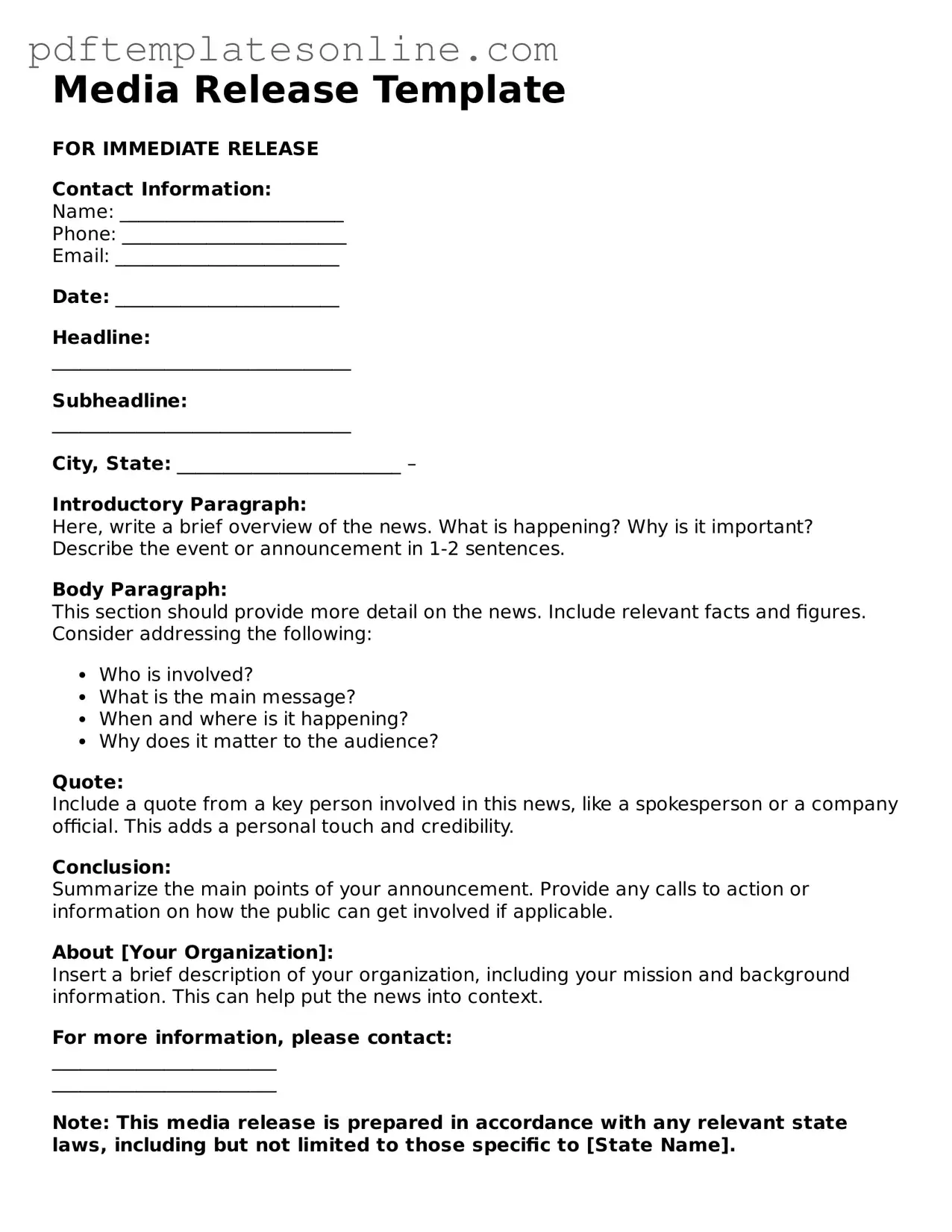Completing a Media Release form may seem straightforward, but several common mistakes can lead to complications down the line. First, individuals often forget to include their contact information. Without a valid phone number or email address, it becomes difficult for media representatives to reach out for clarifications or additional information. Always ensure that your contact details are clear and accurate.
Another frequent error is neglecting to read the entire form carefully. Many people skim through the document, missing critical sections that outline the scope of the release. This oversight can result in misunderstandings about how their image or information will be used. It is essential to understand the terms and conditions before signing.
In some cases, individuals fail to specify the intended use of the media. A vague description can lead to unintended consequences, such as the misuse of personal images or information. Providing detailed information about how and where the media will be used helps protect personal rights and ensures that all parties are on the same page.
Additionally, people often overlook the importance of checking the box that indicates their consent. This simple action is crucial for the validity of the release. Without it, the media outlet may not have the legal right to use the provided materials, leading to potential legal disputes.
Another mistake involves not keeping a copy of the signed form. Once the form is submitted, individuals may forget the specifics of what they agreed to. Retaining a copy ensures that there is a record of the consent given, which can be invaluable if questions arise later.
Some individuals may also fail to ask questions when they do not understand certain parts of the form. Seeking clarification is vital. If something is unclear, it is better to ask for help rather than signing a document that could lead to misunderstandings or unwanted outcomes.
Moreover, people sometimes neglect to update the form if their circumstances change. For example, if an individual changes their name or contact information, they should submit an updated Media Release form. Failing to do so can create confusion and may even invalidate the original release.
Another common oversight is not considering the implications of the release on privacy. Many do not think about how their images or personal stories may affect their privacy in the future. It is important to weigh the potential long-term effects before granting permission for media use.
Finally, some individuals may rush to fill out the form without taking the time to reflect on their decision. A hasty decision can lead to regret later on. It is advisable to take a moment to consider the implications of signing the release before proceeding.
